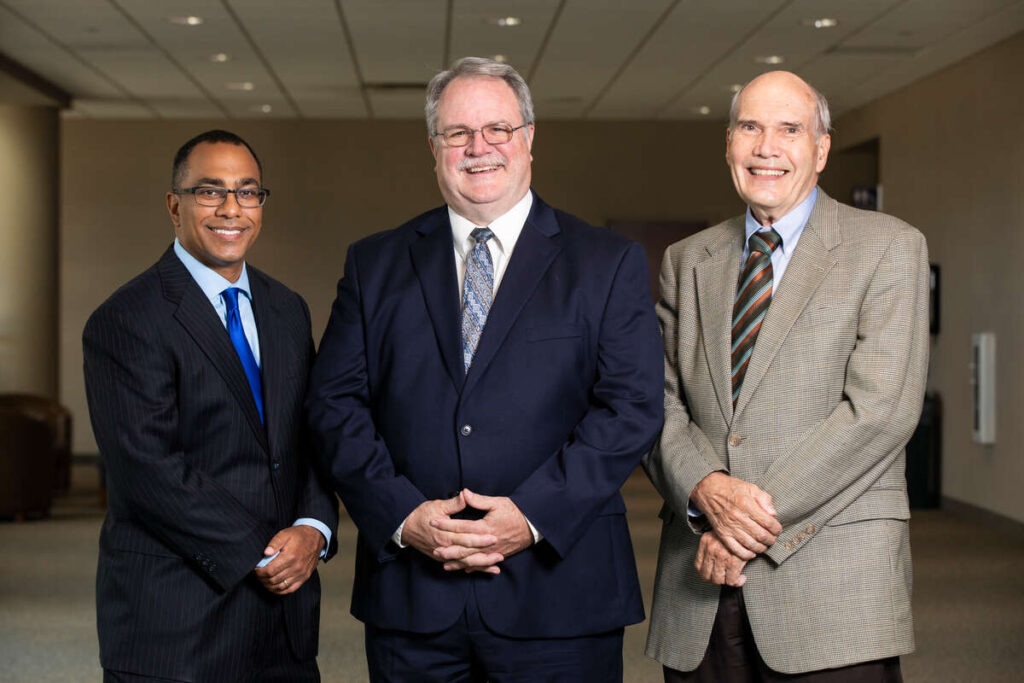At 12:04 a.m. March 24, 1989, the Exxon Valdez ran aground on Bligh Reef in Prince William Sound, Alaska. Six hours later, the tanker had spilled approximately 10.9 million gallons of crude oil, creating the largest oil spill in U.S. waters. Eventually, the spill affected more than 10,000 square miles of ocean and 1,500 miles of Alaskan coastline, and the habitat of many sea mammals, fish and birds. Because Prince William Sound is accessible only by boat or helicopter, government and industry response efforts were difficult. The remote location, very large spill size and the character of the oil tested government preparedness and response capabilities.
When the Exxon Valdez struck Bligh Reef, it caused an oil spill that quickly became synonymous with environmental tragedy. Over the last 20 years, as the case has made its way to the U.S. Circuit Court of Appeals twice and finally the U.S. Supreme Court, it also has become a study of the justice system. Among the questions involved are the length of legal proceedings, the role of compensatory and punitive damages, and corporate and personal responsibility in the wake of tragedy. After two decades, disagreement is widespread on what this case says about justice.
Today, the impacts still are evident on the environment and on the lives of the people affected. In a report marking the spill’s 20th anniversary, the Exxon Valdez Oil Spill Trustee Council stated, “At this rate, the remaining oil will take decades and possibly centuries to disappear entirely.” The EVOSTC lists two species of wildlife as “not recovered,” 10 species as “recovering,” five listed as “unknown” and 10 as “recovered.”
Fishermen in Prince William Sound say they have not recovered either. They have waited for the final resolution of the punitive damages phase of Baker v. Exxon. The initial jury verdict and judgment of $287 million for compensatory damages and $5 billion in punitive damages were awarded in 1994, but the punitive damages were appealed. That payout was cut to $500 million by the U.S. Supreme Court in 2008.Others have given their lives over to the case. Countless scientists, legal professionals, reporters and others have become involved. One of the lead attorneys for the plaintiffs, Brian O’Neill, gets a far-off look in his eye when he says, “There are an awful lot of hours and years that this is what I did.” He speaks for many who continue to be haunted by it.
Exxon Mobil Corp. appears to have recovered the most fully, but the case has left a legacy. By its own account, Exxon Mobil has spent more than $3.4 billion in cleanup and related settlements. The corporation continues to have to justify its actions regarding the spill and respond to stories it thinks do not represent its efforts to restore the habitat and public trust.
There are many sides in the debate about the ongoing legal and environmental recovery process for those who continue to live with the spill’s effects. For their part, fishermen believe that the promise that they would be “made whole” has not happened. They have complaints against Exxon, but they also have a lot to say about the state of Alaska and others whom they think should have represented their interests better. Also in the mix of views are environmental groups, native tribes, lawyers and others who have all participated in the aftermath.
The Fishermen
Shortly after the spill, Exxon representatives promised commercial fishermen and others that they “would be made whole.” On the 20th anniversary of the spill, fishermen said they are still waiting for the fulfillment of that promise.
“I’m just a guy that got run over by a big truck” is how one, John Platt, describes his situation. A third-generation Prince William Sound fisherman, he started fishing with his own boat in 1982 after helping his father fish the Sound. Typical of someone who earns his living from natural resources, he remembers the spill as happening “just before herring season.” Since that time, fishing hasn’t been the same, he said.
In 16 of the past 18 fishing seasons there has been no herring fishing. His license to commercially harvest them seemed like a sure bet when he purchased it from his father, but since the Exxon Valdez disaster, Platt has gotten further behind every year on the loan for his license. Platt admitted, “I’m biased in the sense that I’m a victim in this case,” and he has strong feelings about Exxon, the state of Alaska and the justice system.
Exxon is a common villain in stories about the Exxon Valdez disaster and it doesn’t get off free with Platt. “I realized how big and powerful Exxon was,” he said. “They proved that if you have enough money you could buy justice.” Platt noted that his father and other Prince William Sound fishermen started their fight in 1971 by opposing the Alaska pipeline. He likes to point out that Sen. Ted Stevens stated at the time, “Using the latest technologies, not one drop [of oil] would ever touch the waters of Prince William Sound.”
“One of the reasons I kept my sanity through the whole thing is that I never counted on a settlement. I expected the worst and kind of hoped for the best,” Platt said. From Platt’s perspective, justice has not come, nor will it when his punitive damages check finally arrives. He points out the bankruptcies, divorces, suicides and other deaths that are related at least in part to the disaster.
What is clear from talking with fishermen such as Platt is that they do not feel heard, and they do not believe justice has been done. Many waited for the conclusion of the punitive damages phase of the trial because they thought that money might be what they needed to restore their way of life or at least to help them feel Exxon had been held responsible. That hasn’t happened. Some legal scholars argue that is not the role of punitive damages; what the fishermen really needed was better or more complete compensatory damages.
This is the area where anger is directed toward the state of Alaska. Platt’s strongest criticisms point to those who he said failed to stand up for the fishermen when the oil hit Prince William Sound. One of his chief complaints is that the state no longer pressured Exxon to settle with the other parties after it had settled with Exxon in 1991. Platt points out that the state of Alaska holds the loan on his herring license and has continued to charge interest over the 20 years since the spill, including the 16 seasons during which Platt has not been able to fish. He figures his settlement check on the herring license will not even cover what he owes the state of Alaska in interest. Platt also makes the case that the state of Alaska received almost $1 billion from Exxon for compensation and has earned billions more on the pipeline, but has done little to work with the affected fishermen. Exxon Mobil Corp.
No company or organization has ever spent as much on environmental cleanup or settling compensatory damages as Exxon has in relation to the spill. As a corporation, it has spent more than $2.1 billion over the years on the cleanup effort and a total of $3.4 billion, which includes other settlements. It points to compensatory damages that already have been paid to prove that it has met its responsibilities to undo or at least mitigate the damage done by the Valdez spill.
According to a March 19, 2009, press release on the anniversary of the spill, “The ecosystem of Prince William Sound today is healthy, robust and thriving.” The same release essentially stated that the spill was a tragic accident, but 20 years later there is “… no long-term damage caused by the spilled oil.”
In 2004, Exxon Mobil’s Vice President for Public Affairs Ken Cohen responded to comments made during Alaska’s senatorial race: “Exxon Mobil has been a good corporate citizen in Alaska for more than 30 years. We have been a major contributor to Alaska’s economy, to community programs, to education and the arts.” In the same press release, Cohen said, “Virtually all Valdez compensatory – actual – damages were paid in full within one full year of the accident. And the trial court commended Exxon for coming forward.” Exxon had come forward with initial payments to fishermen and Alaska natives of $300 million, civil settlements with state and federal governments of $1 billion and criminal fines of $25 million.
The phase of the trial that was not complete in 2004 and remains un-resolved includes punitive damages. The corporation and the fishermen and communities affected by the spill look at the role of the punitive damages very differently.
The original $5 billion punitive damages verdict was record-setting and came after compensatory damages already had been awarded. The $5 billion award had been cut to $2.5 billion during an initial appeal to the 9th Circuit.
The most recent ruling in the case occurred in June 2008, when the U.S. Supreme Court lowered the punitive damages award from $2.5 billion to $500 million. In that decision, the Supreme Court indicated that the record-setting punitive damages award did not have a basis in law. For its part, Exxon stated that it already has compensated those who claimed direct damages.
That would reduce the average individual award settlement from $75,000 down to $15,000. The new amount equals $750 per year for the last 20 years plaintiffs have been waiting for the check. Interest on the punitive damages remains outstanding.
The Lawyers
Brian O’Neill, a partner at Faegre & Benson in Minneapolis, has spent most of his legal career on the Exxon Valdez case. He does not mince words when asked about the argument that Exxon has met its obligations. “It’s crap,” he said. O’Neill served as the chief trial lawyer for the plaintiffs. “They did not pay the basic compensatory damages to the fishermen they hurt by any stretch of the imagination,” O’Neill explained. Maritime law does not compensate the individual fishermen and the punitive damages award should have taken care of that, he said.
Exxon has its own criticisms of the lawyers. In an October 2004 news release, Exxon representatives stated, “The plaintiff’s attorneys, many of whom do not live in the state and have not made any contributions to the quality of life in Alaska, stand to make an enormous windfall off the Valdez accident if the punitive damages award is upheld.”
O’Neill explained that it would be a poor business decision to get involved in the investment of time and energy with no guarantee of a paycheck along the way. By some estimates, Exxon has spent $400 million in lawyers’ fees on this case. O’Neill and the other plaintiffs’ lawyers have collected a fraction of that, and with the recent slashing of the punitive damages award, what may have looked like big legal fees will be greatly diminished.But What About Justice?
Publicly, Exxon says very little about the spill. Even on the 20th anniversary when CBS News, The New York Times and many other major media outlets ran stories, Exxon did not go on record other than through press releases. However, one can surmise from its response that it thought either justice was done, or that it didn’t do anything wrong in the first place. Exxon pointed out, “The punitive damages suggested by Alaska Judge Holland are not a debt that is owed; they represent a windfall in excess of the amount the jury found necessary to compensate the victims for their losses.” In essence, Exxon’s argument is that it has restored the ecosystem, paid its debt to society in the form of the settlement with the state and federal governments, and met its obligations to compensate the victims through the compensatory damages that were awarded and punitive damages that are not warranted.
It is challenging to find anyone who agrees with this assessment outside of Exxon, and that disagreement is one of the key lessons of the litigation. Even those closest to the case have lost faith in the justice system.
“There are only two groups that don’t think Exxon did anything that was wrong: one group is Exxon and the other is a group of five justices from the Supreme Court,” O’Neill said.
As for the justice system, Platt is clear: “I’m totally disillusioned with it,” he said. The time it took for the case to be resolved and the final Supreme Court decision has eroded Platt’s faith over the years.
“The spill and the lawsuit haven’t brought about any change,” O’Neill said. For example, Exxon Mobil is the major company fighting the change to double-hull tankers, which were designed to protect against future disasters.
“The tragedy is that for the last 20 years these people have lived with the reality of the spill without any closure,” O’Neill stated. O’Neill gave two reasons why the final punitive damages amount was unjust. First, the role of punitive damages under admiralty law was to make “whole” the fishermen and others affected, and the final settlement does not accomplish this. “The other reason for it is to punish,” O’Neill said, “and these guys have gotten away with no punishment.”
He said that Exxon actually has been able to make money by not paying the judgment. The corporation invested the original $5 billon settlement awaiting appeal, and in the past 20 years that investment had an average return near 16 percent. So, even after paying out the $500 million, the corporation will have made money. On top of that, many have said that even a judgment of $5 billion does little to punish Exxon. Its quarterly profits in fall 2008, a dismal time in the world economy, were $7.8 billion. The stock price of Exxon actually went up when the $5 billion verdict was announced because investors saw that payment as a speed bump in the global corporation’s road to profits.
When asked if he could have imagined there would not be final resolution to the case by its 20th anniversary, O’Neill shakes his head. He notes that he thought it was over several times, including after the first appellate court decision. He’s realistic enough to know that five years from the spill to the conclusion of the first court case was very fast. In fact, at the time it was a model for timely judicial resolution in a complex case. As the appeals have continued, it is no longer held up as a model for quick justice.
The case is, “a sad commentary on the American justice system,” said Thomas Holloran, who has written an extensive case study on the Exxon Valdez spill. Holloran is a senior distinguished fellow at the University of St. Thomas School of Law and its Holloran Center for Ethical Leadership in the Professions.
While Holloran is not a strong proponent of punitive damages, he states that if ever there was a time for them, this was the case. His view on the definition of justice provides some clarity. He points out that if those affected get to decide if justice was done, then it hasn’t been done here. Holloran also notes that it is difficult even to explain, because the arithmetic used by the Supreme Court in applying maritime law from the 1800s doesn’t seem to make sense in modern times, and that it trumped a reasoned decision by a jury and supported by sound district appeals court decisions.David Lebedoff, a Minneapolis attorney and author whose 1997 book Cleaning Up told the story of the Valdez spill, said he had “an open mind, but I had a certain amount of sympathy for the company. I don’t accept the rhetoric of the plaintiff that ‘business is bad.’ ”
However, Lebedoff came to the conclusion that the jury’s original punitive damages award was appropriate. He explained that this is not simply an environmental case and that many have miscategorized it. In his mind, the compensatory damages and settlements were meant to settle the environmental issues, but the one group that should have benefited from the punitive damages was the fishermen.Lebedoff brings a unique perspective about the original $5 billion amount, as well. “You can argue about whether we should have punitive damages, but if you have them, you can’t argue that they shouldn’t be punitive.”
While Lebedoff maintains a general faith in the justice system – noting that in most cases it works very well – when it comes to this case, he said, “It is possible to delay a case unreasonably.”
Lebedoff does not blame Exxon, if delay was part of its strategy. But if the 9th Circuit Court of Appeals and other courts let Exxon continue to delay the case, he concluded: “No one should have to wait that long. It is shameful, and it allows for people to have dis-respect for the law.”
Read more from St. Thomas Lawyer.




